Post by Dave on Oct 15, 2012 18:00:00 GMT
On Sunday morning I went for a walk around and decided to check out St Helens, the home of Swansea RFC and also cricket club. The ground is only a stones throw away from the old Vetch Field on the main road to the Mumbles
I was not able to get into the ground but was able to take some photos through two different gates.
This is the clubs history taken from their club website
Swansea Rugby Club is renowned the World over for its many achievements. The sheer number of household rugby names who've worn the famous All White jersey and many who have gone on to the red of Wales and the British & Irish Lions, is only part of the story. The club has an enviable record against the big touring sides and many a Swansea side has raised it's game to maintain this record. More on this below.
The ‘All Whites’ was initially formed in 1872 under association football rules and converted to rugby following a decision on 17 October 1874. It is believed the first rugby game played by Swansea was against Llandovery College on 28 November 1874.
In 1875 the club joined with the existing cricket club to become ‘Swansea Cricket & Football Club’. The current title Swansea R.F.C. Ltd dates from the age of professionalism (1995).
The club in March 1881 became one of the eleven founder clubs of the Welsh Rugby Union. The club was hugely influential with the Union’s formation with 3 former club captains taking prominent positions. Charlie Chambers (President) and Fred Meager and AH Richardson were joined by HR Knill from the club, the latter 3 being members of the Committee.
Its home, the world famous St Helen’s ground was formerly an international rugby venue (1882 - 1954) and equally famous as a cricket centre for Glamorgan County Cricket Club.
Since its inception, Swansea has always been a leading club, both within Wales and on the international scene. Early halcyon days were in the period 1898 - 1914 when they were invincible (1904/05) and Welsh champions on six other occasions.
The shirt colours first adopted by Swansea were blue and white horizontal stripes. Then, for one season, the players wore a vivid scarlet. The white jersey was adopted after that, and retained. The club did not truly become ‘All White’ until 10 January 1925 when white shorts were worn instead of the (usual) blue ones used previously.
Swansea defeated New Zealand 11-3 in 1935 to become the 1st club side to defeat the Southern Hemisphere ‘big 3’, following victories over Australia (1908) and South Africa (1912). Swansea had also gained the distinction of being the 1st club side ever to defeat a full New Zealand touring team.
Among the pre-war players of distinction were the legendary duo of Billy Bancroft and Billy Trew, together with Claude Davey, Rowe Harding, Dick Jones and Dicky Owen.
The immediate post war years brought only limited success, although a notable 6-6 draw was achieved against New Zealand in 1953 followed by a 9-8 victory against Australia in 1966. It was not until the club’s centenary season in 1973/74, however, that the club became Merit Table Champions. Swansea achieved further success as club champions in 1979/80, 1980/81, 1982/83 as well as Welsh cup winners in 1978.
Players during this period included Clem Thomas, Billy Williams, Dewi Bebb, Mervyn Davies, Geoff Wheel and David Richards.
The last decade or so has seen unprecedented success, including being league champions on 4 occasions (1991/92, 1993/94, 1997/98 and 2000/01) and Welsh cup winners in 1995 and 1999. A memorable 21-6 victory was recorded over then World champions Australia at St Helens on 4 November 1992. In season 1995/96 Swansea reached the semi-final stage of the European Cup.
Twenty-three Swansea players have toured with the British Lions and some one hundred and sixty seven have played with distinction since 1882 in various Welsh National sides. Amongst this number are four of the most capped players of all time, modern players Colin Charvis, Garin Jenkins, Robert Jones and Scott Gibbs.
The 2003/04 season has seen a significant change with the introduction of regional rugby in Wales. Swansea Rugby Football Club Ltd, co-owners of the Ospreys, are a Premiership Club which is also producing a development path to the Regional Squad for aspiring players.
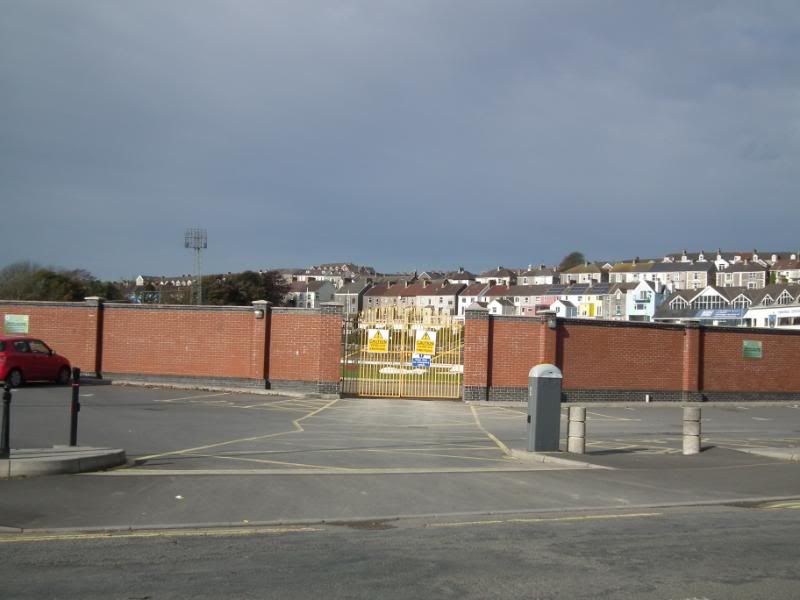
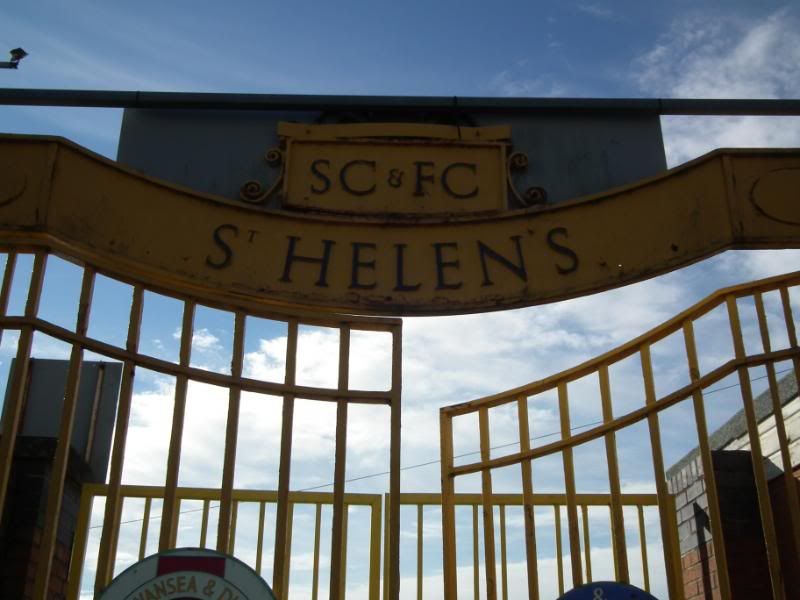
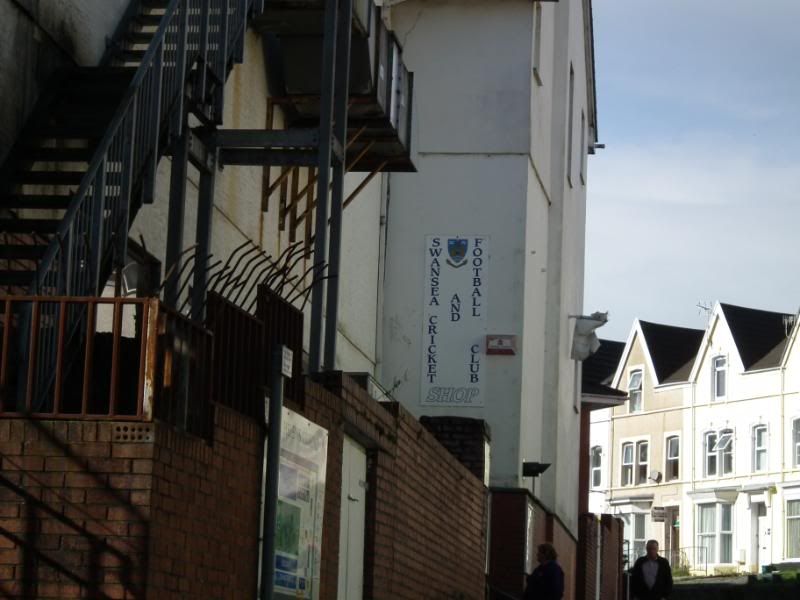
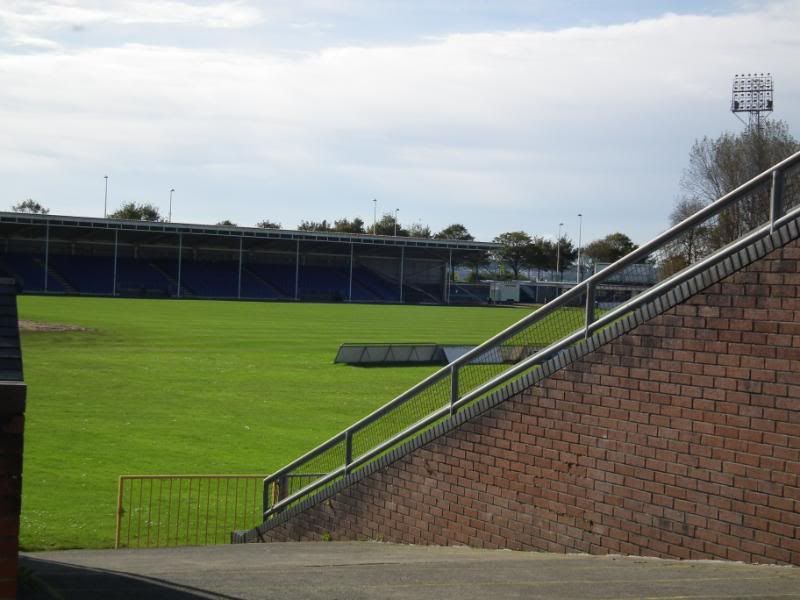

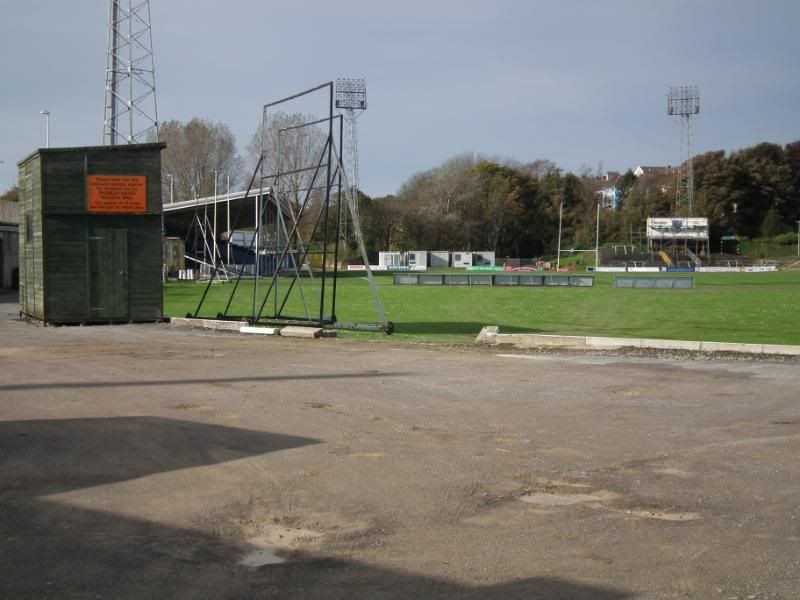
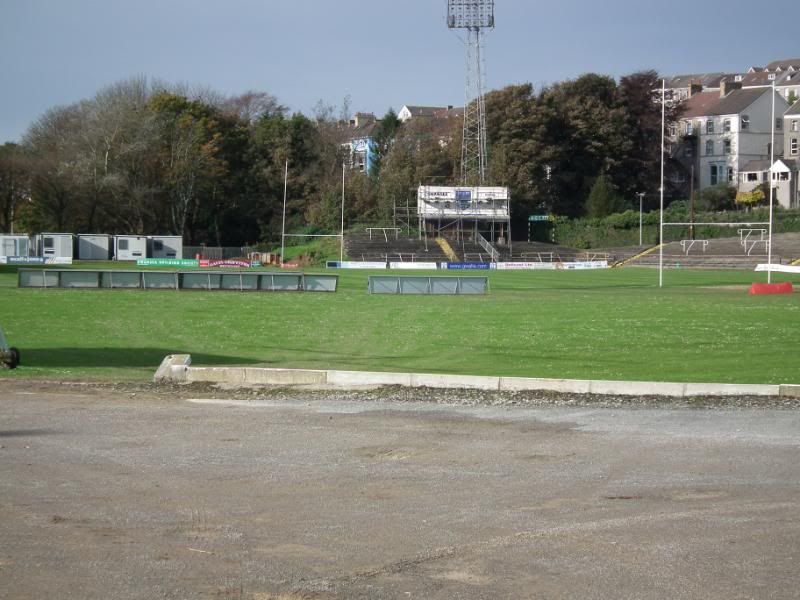
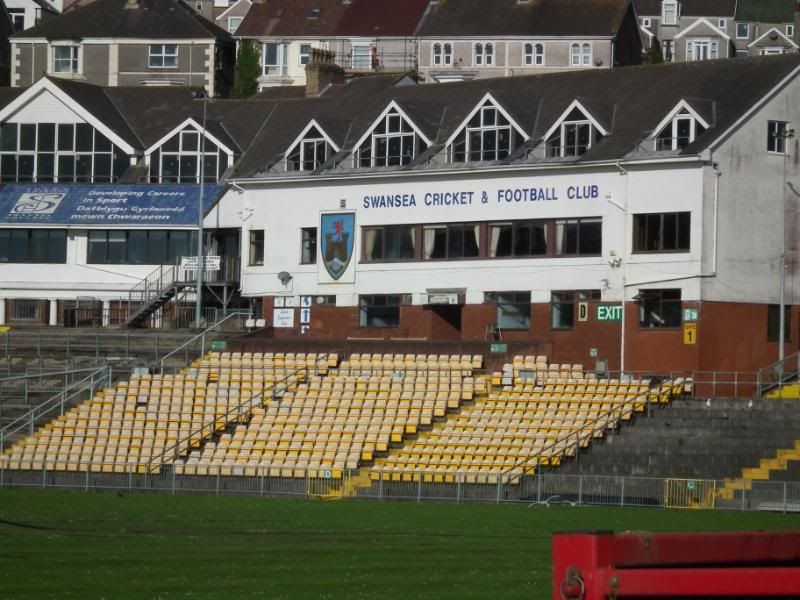
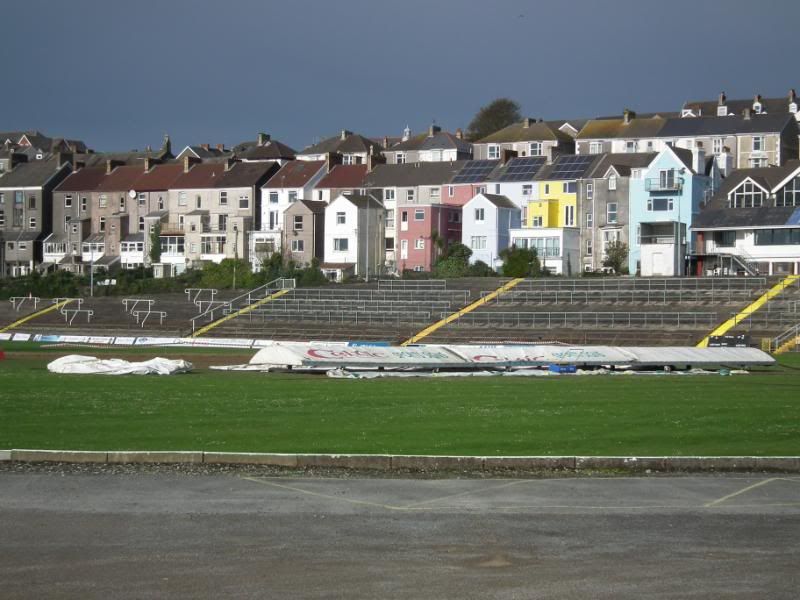
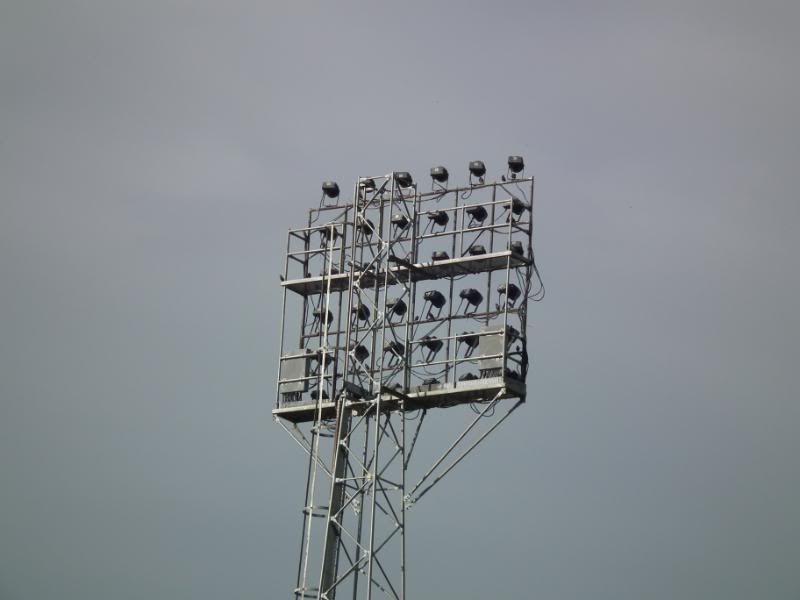
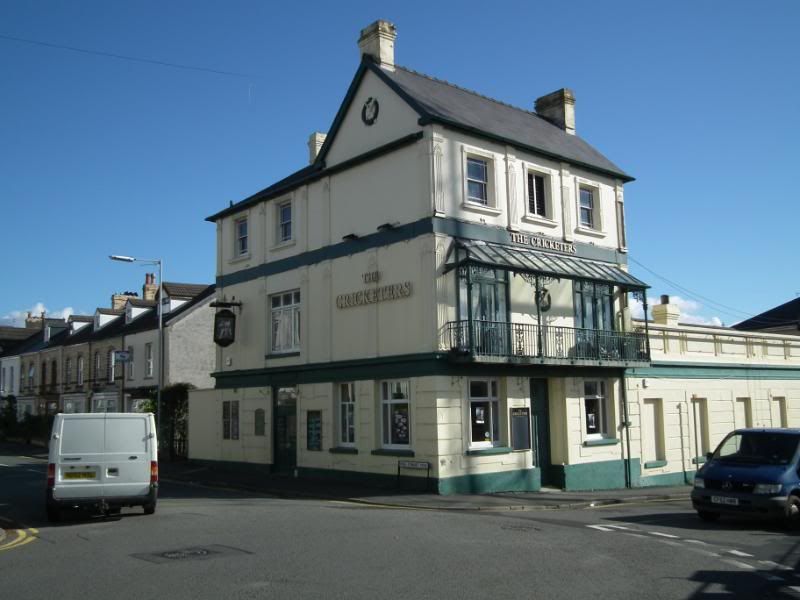
I was not able to get into the ground but was able to take some photos through two different gates.
This is the clubs history taken from their club website
Swansea Rugby Club is renowned the World over for its many achievements. The sheer number of household rugby names who've worn the famous All White jersey and many who have gone on to the red of Wales and the British & Irish Lions, is only part of the story. The club has an enviable record against the big touring sides and many a Swansea side has raised it's game to maintain this record. More on this below.
The ‘All Whites’ was initially formed in 1872 under association football rules and converted to rugby following a decision on 17 October 1874. It is believed the first rugby game played by Swansea was against Llandovery College on 28 November 1874.
In 1875 the club joined with the existing cricket club to become ‘Swansea Cricket & Football Club’. The current title Swansea R.F.C. Ltd dates from the age of professionalism (1995).
The club in March 1881 became one of the eleven founder clubs of the Welsh Rugby Union. The club was hugely influential with the Union’s formation with 3 former club captains taking prominent positions. Charlie Chambers (President) and Fred Meager and AH Richardson were joined by HR Knill from the club, the latter 3 being members of the Committee.
Its home, the world famous St Helen’s ground was formerly an international rugby venue (1882 - 1954) and equally famous as a cricket centre for Glamorgan County Cricket Club.
Since its inception, Swansea has always been a leading club, both within Wales and on the international scene. Early halcyon days were in the period 1898 - 1914 when they were invincible (1904/05) and Welsh champions on six other occasions.
The shirt colours first adopted by Swansea were blue and white horizontal stripes. Then, for one season, the players wore a vivid scarlet. The white jersey was adopted after that, and retained. The club did not truly become ‘All White’ until 10 January 1925 when white shorts were worn instead of the (usual) blue ones used previously.
Swansea defeated New Zealand 11-3 in 1935 to become the 1st club side to defeat the Southern Hemisphere ‘big 3’, following victories over Australia (1908) and South Africa (1912). Swansea had also gained the distinction of being the 1st club side ever to defeat a full New Zealand touring team.
Among the pre-war players of distinction were the legendary duo of Billy Bancroft and Billy Trew, together with Claude Davey, Rowe Harding, Dick Jones and Dicky Owen.
The immediate post war years brought only limited success, although a notable 6-6 draw was achieved against New Zealand in 1953 followed by a 9-8 victory against Australia in 1966. It was not until the club’s centenary season in 1973/74, however, that the club became Merit Table Champions. Swansea achieved further success as club champions in 1979/80, 1980/81, 1982/83 as well as Welsh cup winners in 1978.
Players during this period included Clem Thomas, Billy Williams, Dewi Bebb, Mervyn Davies, Geoff Wheel and David Richards.
The last decade or so has seen unprecedented success, including being league champions on 4 occasions (1991/92, 1993/94, 1997/98 and 2000/01) and Welsh cup winners in 1995 and 1999. A memorable 21-6 victory was recorded over then World champions Australia at St Helens on 4 November 1992. In season 1995/96 Swansea reached the semi-final stage of the European Cup.
Twenty-three Swansea players have toured with the British Lions and some one hundred and sixty seven have played with distinction since 1882 in various Welsh National sides. Amongst this number are four of the most capped players of all time, modern players Colin Charvis, Garin Jenkins, Robert Jones and Scott Gibbs.
The 2003/04 season has seen a significant change with the introduction of regional rugby in Wales. Swansea Rugby Football Club Ltd, co-owners of the Ospreys, are a Premiership Club which is also producing a development path to the Regional Squad for aspiring players.












